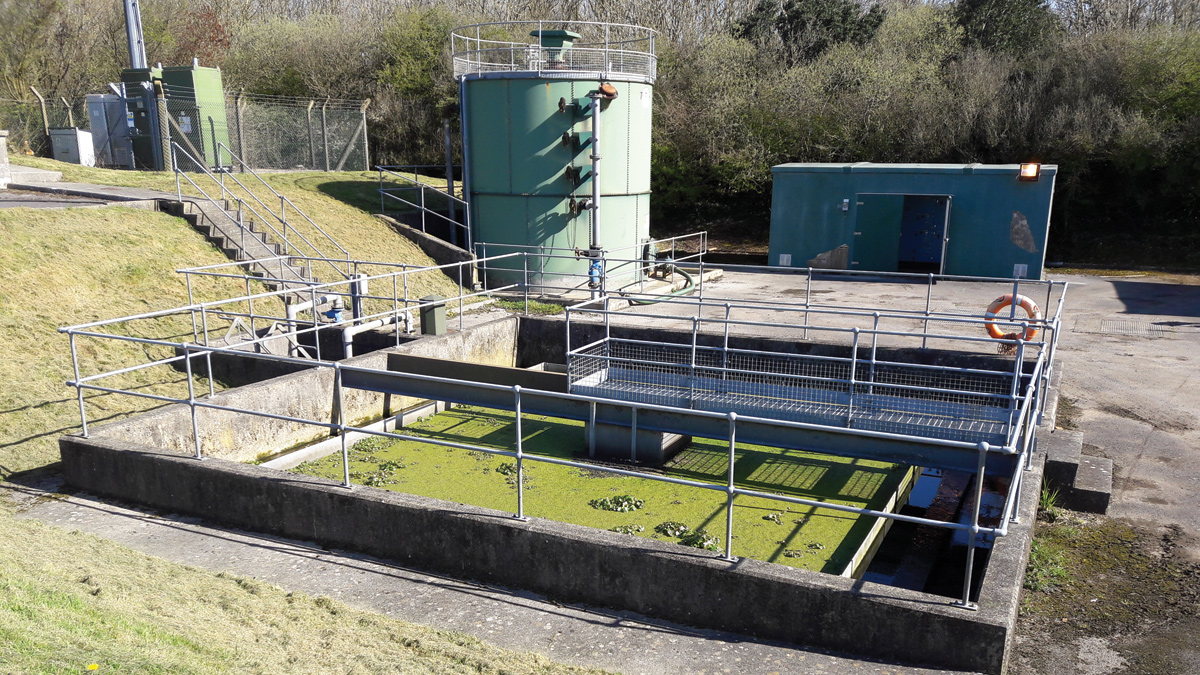DCWW Wastewater Treatment Works Rationalisation (2017)

The project provides an evidence base for identifying opportunities for rationalising the number of WwTWs - Courtesy of Black & Veatch
While the investment by the regulated water sector of England and Wales is governed by a five-yearly cycle, this investment relates to what are long-lived assets. Decisions about when to undertake capital investment and what to include in a capital programme have a direct bearing on the operating costs associated with the assets. Ultimately the decisions shape the total lifetime costs that are passed on to customers. The significance of this is highlighted by the shift in regulation by regulator Ofwat towards consideration of total expenditure, or TOTEX, rather than treating capital expenditure and operational expenditure separately.
Background
A recent project undertaken by Black & Veatch (now Binnies) for Dŵr Cymru Welsh Water (DCWW) involved a rapid TOTEX-based assessment of options for the utility. The aim was to provide support to DCWW’s Asset Strategy Team for the strategic planning of its wastewater infrastructure. More specifically, it provided the utility with an evidence base for identifying future opportunities for rationalising the number of wastewater treatment works it owns and operates.
DCWW currently has around 830 wastewater treatment works across a service area that is largely rural. In total the works serve 3 million people, but the median population equivalent served by them is less than 270.
As with any water utility this asset base is not static. DCWW continually has to make decisions about how best to invest in its assets. This can include rationalising the number of treatment works in certain locations by diverting flows from smaller installations to larger centralised ones.
At the end of 2015, DCWW decided to make a fresh strategic assessment to consider any further opportunities for rationalisation across its wastewater asset base. As part of this exercise, it decided to inform its strategic planning with a 40-year combined capital and operational expenditure – TOTEX – assessment of the options.
DCWW first undertook an internal review built on discussions with its operations team. This identified almost 100 treatment works in 24 groups for which DCWW then sought external input to help it identify a shortlist of candidate schemes. This work was awarded to Black & Veatch.
Utility-wide asset awareness
The key feature of this project is that it had to deliver assessments of sufficient detail and accuracy to support sound strategic planning, but to do this within a short time span. This was achieved by limiting the activity at this stage to desktop studies.
An initial contract covered over 60 works in 14 groups in three of DCWW’s six regions; north-west, west, and Swansea. Assessments for these had to be completed by March 2016. A second contract overlapped this to carry out the assessments for around 34 works in ten groups for DCWW’s north-east, Hereford, and Cardiff regions by November 2016.
The awards stemmed from the asset management framework agreement between DCWW and Black & Veatch. This relationship along with a considerable history of working with the utility meant Black & Veatch was able to bring to the project a team with a thorough understanding of DCWW’s asset base such that it was able to make rapid assessments appropriate for each location.
The task for each group of treatment works was to build up a 40-year picture of the costs associated with two basic scenarios – one of maintaining separate works, the other of centralising treatment at one of the works. Broadly speaking, this is to support a process of determining where up-front capital investment in centralisation can lead to a reduction in total expenditure in the longer term by cutting operating costs when compared to the scenario of keeping separate works operational.
When assessing whether changing the status of an existing site was necessary and/or viable a number of key criteria, or favourable conditions, were considered. These included the following:
- High operation and maintenance costs give the opportunity for more efficient treatment elsewhere.
- Tight discharge permit conditions and potential for more relaxed standards at a new/alternative site.
- Physical constraints on expansion such as encroaching housing.
- Multiple drivers for improvement at adjacent sites – quality, growth and maintenance.
- Coincident timing – improvement schemes needed at similar times at adjacent sites.
- Amenable topography – transfers down valleys or around the coast.
- No major transfer barriers – rail or river crossings, or dense urban areas, will increase capital cost of transfer.
- Available headroom at a receiving works – spare capacity, helpful permit headroom.
The assessment also required anticipating the likely need for investment at each works both for general asset maintenance and replacement and to cope with expected changes of requirement, such as might result from population growth or regulatory drivers for phosphorus removal for example.
It also involved scoping out the main components of the wastewater system that would be needed in each case, covering treatment processes as well as wider system components such as gravity mains, rising mains, pumping stations, and outfalls. This therefore meant the project involved assessing investment needs for what were typically very site-specific arrangements as far as identifying feasible options for pipelines to transfer flows between works is concerned. The topography of Wales made this latter aspect particularly challenging. Assets may be relatively close in terms of the direct distance between them, but steep terrains can mean pumping between them may not be economically viable.
From data to decision making
This rapid delivery of the strategic assessment necessitated the collection of data from a wide range of sources, one of the most challenging aspects of the project. These included investment, GIS, flow data, and strategic growth sources, along with reports from scientific and operational staff, and involved bringing together data on existing infrastructure across DCWW’s operational areas.
The data gathering involved the project team working directly with DCWW’s data systems. This included working with DCWW’s solution target pricing tool, in addition to which the cost of each of the options was built up by accessing DCWW’s unit cost database.
A spreadsheet-based cost estimation tool was also developed. This was based on the formulae in the unit cost database. It provided a simplified means for producing the high level costs for pumping schemes, refurbishment, and construction of new works and for comparing long term options. The tool was subsequently passed on to DCWW for its own use at the end of the project.
The project team had to be able to interpret this data effectively in order to be able to come up with outline solutions in each case. An important aspect of the project was therefore to agree protocols with DCWW to allow the project team to make valid assumptions where gaps in data existed.
Use of the DCWW data working at this scale across the utility’s asset base and providing input at a very strategic level represented one of the most innovative aspects of the project. Furthermore, the combination of identifying engineering needs and working upwards from unit costs represents the behind-the-scenes complexity of the rationalisation project. The aim of the project though was to support DCWW’s strategic decision making.
To this end, key outputs of the work were a simple graphic presentation of cumulative TOTEX costs over a 40-year time horizon for the separate and rationalised options in each location. These were accompanied by a statement of the 40-year TOTEX for each option and the payback period associated with making the additional capital expenditure to achieve centralisation.

The assessment required anticipating the need for investment at each works – Courtesy of Black & Veatch
TOTEX-based options
The graphics, TOTEX statement and payback assessment were presented in the main deliverables of the project – a rationalisation report for each group of treatment works assessed.
Each of the reports set out the details of the wastewater assets in each group, the assumptions made about future needs, the options considered, and a recommended option for each treatment works. They collated key information about each of the treatment works, including any operational and performance issues. They also set out details of any pipeline planning routes identified in this preliminary process. The reports therefore provided the client with an authoritative and consistent set of reference documents to inform its future strategic planning.
The focus on TOTEX is important given the long life of water utility assets. It builds on previous industry practice of undertaking whole-life cost assessments during project option evaluation. The type of strategic assessment made for DCWW is likely to feature increasingly as a part of utility planning.
It is important to note though that TOTEX alone may not always determine the most suitable option to pursue, or may not do so unless assessed using a wider framework. For example, recommendations made in certain instances for the DCWW project drew attention where appropriate to options that may provide greater resilience – in coastal locations for example. The project therefore represented a broader input to DCWW’s strategic planning.
Use of TOTEX is likely to develop further in the UK, especially as experience grows of utilities in England and Wales working with Ofwat expectations in this area. In anticipation of that, the DCWW wastewater rehabilitation project illustrates how it is possible to work collaboratively with a client, even utilising data directly from their system, and how it is possible to use an asset management-based approach to provide input to a utility’s strategic investment planning and ultimately help achieve overall best value for both client and customers.



